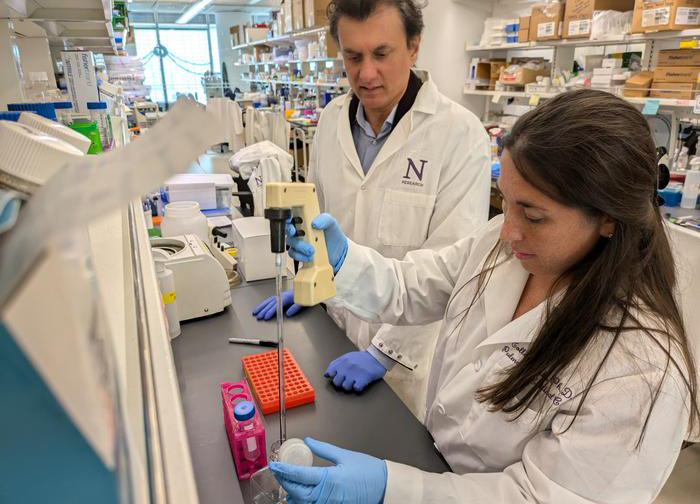Advertisment
What is metformin’s secret sauce?

Millions of people take metformin, a Type 2 diabetes medication that lowers blood sugar. The “wonder drug” has also been shown to slow cancer growth, improve COVID outcomes and reduce inflammation. But until now, scientists have been unable to determine how, exactly, the drug works.
A new Northwestern Medicine study has provided direct evidence in mice that the drug reversibly cuts the cell’s energy supply by interfering with mitochondria, often referred to as the cell’s “powerhouse,” to lower glucose levels.
More specifically, metformin blocks a specific part of the cell’s energy-making machinery called mitochondrial complex I. In doing so, the drug can target cells that may be contributing to disease progression without causing significant harm to normal, healthy cells.
The study will be published Dec. 18 in the journal Science Advances.
“This research gives us a clearer understanding of how metformin works,” said corresponding author Navdeep Chandel, the David W. Cugell, MD, Professor of Medicine (Pulmonology and Critical Care), investigator with the Chan Zuckerberg Initiative and a professor of biochemistry and molecular genetics at Northwestern University Feinberg School of Medicine. The study’s first author is Colleen Reczek, research assistant professor of medicine (pulmonary and critical care medicine) at Feinberg.
“This research significantly advances our understanding of metformin’s mechanism of action,” Chandel said. “While millions of people take metformin, understanding its exact mechanism has been a mystery. This study helps explain that metformin lowers blood sugar by interfering with mitochondria in cells.”
Metformin has been used as a diabetes treatment for more than 60 years. The relatively inexpensive medication, which derives from compounds in the French lilac plant, is the first line of defense for many patients with Type 2 diabetes worldwide, Chandel said. In the U.S., some patients take it alongside other medications like new diabetes and weight-loss drugs — semaglutides such as Ozempic or Mounjaro.
Scientists have many theories about metformin’s effect on cells, but the theories are often grounded in research from distinct fields and have provided only indirect evidence to back hypotheses, Chandel said.
“Every year there’s a new mechanism, a new target of metformin, and the next few years people debate those and don’t come to a consensus,” Chandel said.
Because metformin requires a transporter to access the interior of cells — where mitochondria live — it affects only a handful of cell types, mostly in the gut, liver and kidney. To test mitochondrial complex I’s role in glucose reduction, Reczek created mice genetically engineered to express a yeast enzyme (NDI1) that mimics mitochondrial complex I but is resistant to metformin inhibition.
They compared blood glucose levels in mice with and without metformin, and with or without the expressed yeast NDI1 protein. Glucose levels in the control mice lowered upon metformin administration. By contrast, NDI1-expressing mice ameliorated metformin reduction in glucose levels, indicating that metformin targets mitochondrial complex I to reduce glucose levels.
“The NDI1-expressing mice were not completely resistant to its glucose-lowering effects, suggesting metformin may also target other pathways to some extent, but more research is needed,” Chandel said.
Previously, the Chandel group had used NDI1 to demonstrate that metformin anti-cancer effects in cells that express the transporter for metformin were also due to inhibition of mitochondrial complex I in cancer cells.
Moreover, one of the co-authors of the current study, Dr. Scott Budinger, chief of pulmonary and critical care in the department of medicine at Feinberg, has previously shown with Chandel that metformin can decrease pollution-induced inflammation in mice by interfering with mitochondrial complex I.
“We think that the diverse effects metformin has on lowering glucose levels, decreasing inflammation and its potential anti-cancer effects could, in part, be explained by inhibiting mitochondrial complex I,” Chandel said. “Eventually, others will have to corroborate our idea of mitochondrial complex I inhibition as a unifying mechanism to explain how metformin could improve healthspan in humans.”
Image: Study authors Navdeep Chandel and Colleen Reczek in the lab at Northwestern University Feinberg School of Medicine.
View more Credit: Northwestern University





